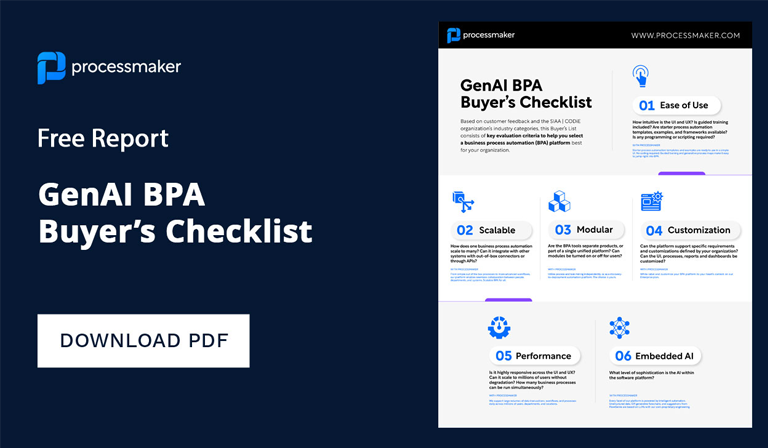Everybody is on the cloud or on their way, but how is your company evolving its cloud technology and IT strategy to improve business growth? We debunk and uncover some of the most common questions related to enterprises interested in evolving their business strategy with this innovative technology.
A history of the cloud
Cloud computing is when an enterprise accesses servers, storage, networking, and software through the Internet from a provider with pay-as-you-go pricing. You only pay for what you use. Cloud providers like Amazon Web Services (AWS) store your production workloads off-site, whereas an on-premises solution means that IT infrastructure is tied to actual hardware you maintain.
The concepts of cloud computing originated in the mid-1960s when computer scientist J.C.R. Lindlicker extended mainframe computing to the world’s first interconnected system of computers. By the 2000s, cloud computing turned into an entire industry, with major key players forming in the same decade such as Amazon, Google, and Microsoft.
Traditionally, telecommunications companies offered single point-to-point data connections to customers. As a result of cloud computing’s evolution, virtualized private network connections (VPNs) yielded the same service quality as their point solutions at a fraction of the cost, according to IBM. Rather than build on-premises hardware to allow users to have their own connections, telecom companies could provide those users with shared access to the same on-site infrastructure. This resulted in significant savings.
The current state of the cloud
Cloud computing became mainstream because of its affordable pay-as-you-go price model. For example, a load balancer used to cost well over $50,000; on the cloud, a load balancer can be set up in seconds with significantly lower pay-as-you-go pricing because of the economies of scale the cloud provides. Once enterprises saw dozens of cloud-based startups turn into billion-dollar companies, they started to take the cloud seriously. The big three cloud providers include Amazon Web Services, Google Cloud, and Microsoft Azure.
Cloud computing is transforming the way businesses build and deliver not just products but customer solutions to their users. Cloud computing also offers increased elasticity to scale up resources as needed on-demand, agility, availability, redundancy, security, and reduced cost. One of the main driving factors of cloud adoption was scripted architecture. For the first time ever, companies could create a script of their software stack and automatically deploy that script to the cloud with platforms like AWS instantly deploying the required resources in the script. Entire software updates can now be done with the click a button at 1/100th of the cost.
As the enterprise has shifted from being product-driven to service-driven, the cloud is moving from being tech-centric to user-centric. This has given birth to what is known as “hybrid” cloud computing. Benefits include the ability to store part of your production workload on-premises and the rest in the cloud.
IBM defines a hybrid cloud solution as “a combination of different clouds, whether those clouds are private, public, or a combination of the two.” A hybrid cloud solution can also refer to a mix of multiple cloud environments between different providers, or combining half cloud, half on-premises solutions in the same cloud model. Some companies have moved to a hybrid cloud model to extend existing physical hardware infrastructure investments, scale capacity needs, tailor hardware to workloads, and optimize current networks. Taking advantage of the increased security of an on-premises solution creates a hybrid cloud model that brings together the best of both worlds.
The greatest obstacle for companies is determining which parts of their workloads are a good fit for the cloud and which parts need to stay on-premises if any. Standardized APIs and a strong hybrid IT management strategy are viable ways to overcome this challenge.
The future of cloud computing
According to Forrester, enterprises will begin to build their own digital app platforms across multiple cloud environments, not limited to serverless, event-driven services. The future of cloud computing is containerization, Kubernetes (K8s), serverless computing, and cloud tooling services like RedHat, DataDog, Splunk, SumoLogic, New Relic, and more. The marketing firm predicts that containers will “make K8s easier to deploy, secure, monitor, scale, and upgrade,” the report stated. Information Week also says the focus will also shift to determining whether each company will focus on cloud neutrality or platform-as-a-service (PaaS) cloud.
The enterprise spending trend for cloud computing isn’t slowing down anytime soon. Cloud is the most effective way to differentiate a company against competition to deliver the customer experiences that users demand today.
Is your company seeking a dynamic cloud-based enterprise solution? Learn more about how we are helping businesses just like yours stay ahead of the competition at www.processmaker.com.
About ProcessMaker:
ProcessMaker is a low-code business process management and workflow software. ProcessMaker makes it easy for business analysts to collaborate with IT to automate complex business processes connecting people and existing company systems. Headquartered in Durham, North Carolina in the United States, ProcessMaker has a partner network spread across 35 countries on five continents. Hundreds of commercial customers, including many Fortune 100 companies, rely on ProcessMaker to digitally transform their core business processes enabling faster decision making, improved compliance, and better performance.





